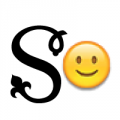Let's chat about Trademark, Registered & Copyright Symbols
Comments
-
One more thing to add about usage of ®: In the pre-desktop publishing days of the seventies and early eighties, it was used much less frequently in text as far as I can recall with getting type set and preparing mechanicals. It was more common to use it on logos or in headlines. For this you could get Letraset sheets, for example, and add them yourself. Usually, you would make them as small as legally possible. So it wasn't really related to type size at all. I seem to recall seeing sheets of logos where the logos were different sizes, but the ® was the same size on all of them.
The other thing to remember, fonts didn't include any of these symbols as part of the character set. You usually got them from a separate font of miscellaneous characters that you could use with any font. They didn't become part of standard character sets until personal computers and PostScript fonts, and even then they had generic designs (not matching the font style).5 -
Letraset sheets came with a tiny, free copyright symbol at the bottom before LETRASET INTERNATIONAL LTD.4
-
 Two weights, even!
Two weights, even!
3 -
A few thoughts from a book designer:
I always prefer when the c in the copyright symbol sits on the baseline (as opposed to the circle sitting on the baseline) and I almost always need to manually baseline-shift the symbol to make this happen. The idea is to have the "c" (which I consider to be essentially a small cap letter) to line up with an uncircled small-cap C or to be vertically centered on the height of the OS numerals.
Do type designers consider these circled characters to be akin to small caps? Lowercase? Caps?7 -
My preferred alignment, achieved manually with baseline shift:

4 -

Here is why I make © cap height.
With regards to the page as a whole, it’s a category of glyph that aligns with capitals, not as you theorize a category of its own, aligning with the centre of the x-height and with extremities that correspond to little else.
With regards to acuity, the critical “counter” distance between the C and the circle is very tight, so requiring the eye to disambiguate the two (because your C presents as an x-height letter + circle), rather than just see one big symbol, is unnecessarily demanding, semantically excessive and redundant.
In the layout above (yes, it’s been a while since I designed a book!) I like the way the © works as part of the capital set; it would have been demeaning for it to be smaller.
If one is going to equate the C of © with a small cap C, then I would explore the idea of making a much larger circle, perhaps even out to extender distance, rather than just shrinking the whole thing. But perhaps there is already a typeface that does that?
As the © generally accompanies figures, Craig’s idea (elsewhere) of different ©s to go with different figure styles, automatically activated in OpenType, might be the only way to keep everybody happy!2 -
Yeah, I think in the end it has to look good (and in this case, clear), and with text figures it’s probably going to be better (to me) if © is shifted down a bit (and maybe scaled or otherwise adjusted).
One factor is I’ve always thought the word “Copyright” is superfluous here; one can simply write “© 2021 Christopher Slye”. (The symbol has the legal meaning and does the heavy lifting.) I doubt including “Copyright” does any damage though, and maybe it helps a little.
In any case, the appearance and alignment of © changes a bit if it’s not preceded by lowercase letters.2 -
Nick, I kind of like your idea. This is Dante, with the normal small cap C, and a circle added around it.

1 -
I think both you and Nick have good points.Joshua Langman said:Nick, I kind of like your idea. This is Dante, with the normal small cap C, and a circle added around it.
The page typeset by Nick has the oldstyle numerals for the date, so they look quite bad to me with the uppercase-height ©. Clearly the ideal solution would be to have two: one when you have lining numerals and one with lowercase/small caps height for the inner /c. I will implement that!1 -
Here’s how I implemented them now:

2 -
Well played, Claudio!0
-
Thank you! :-)Nick Shinn said:Well played, Claudio!
I spent way too much reasoning on this. I implemented ® as well, so it takes back its full cap-height form when the feature 'case' is applied, but I am not sure whether I should include it or not. Of course, when I will go ahead with De Vinne Text (soon) I will make the base ® (superscript) larger, as my De Vinne for now is designed to be used at display sizes 60-70pt, while the Text version is 6-12pt. 2
2 -
@Claudio Piccinini How about trademark? Does it have the same size with superscript ®?
1 -
I am still thinking about how to finalize it. Initially I made it at the same height of ordinals ª and º (my ordinals have an underscore, being “old fashioned” in line with period use of De Vinne). But now that I have made the smaller, superior form of ® the default I think I will either keep the ® baseline (letter form, within the circle) or the full ® circle height as the ™. I wish to systematize so I’ll try to have a look at various common digital fonts: everyone seems to interpret the dimensions of these (® and ™) quite freely.Laurensius said:@Claudio Piccinini How about trademark? Does it have the same size with superscript ®?0 -
Mark Simonson said:My approach is to keep them clear and simple, but harmonious to the style of the font.0
Categories
- All Categories
- 46 Introductions
- 3.9K Typeface Design
- 487 Type Design Critiques
- 564 Type Design Software
- 1.1K Type Design Technique & Theory
- 656 Type Business
- 861 Font Technology
- 29 Punchcutting
- 520 Typography
- 119 Type Education
- 324 Type History
- 77 Type Resources
- 112 Lettering and Calligraphy
- 33 Lettering Critiques
- 79 Lettering Technique & Theory
- 558 Announcements
- 94 Events
- 114 Job Postings
- 170 Type Releases
- 179 Miscellaneous News
- 276 About TypeDrawers
- 54 TypeDrawers Announcements
- 120 Suggestions and Bug Reports








